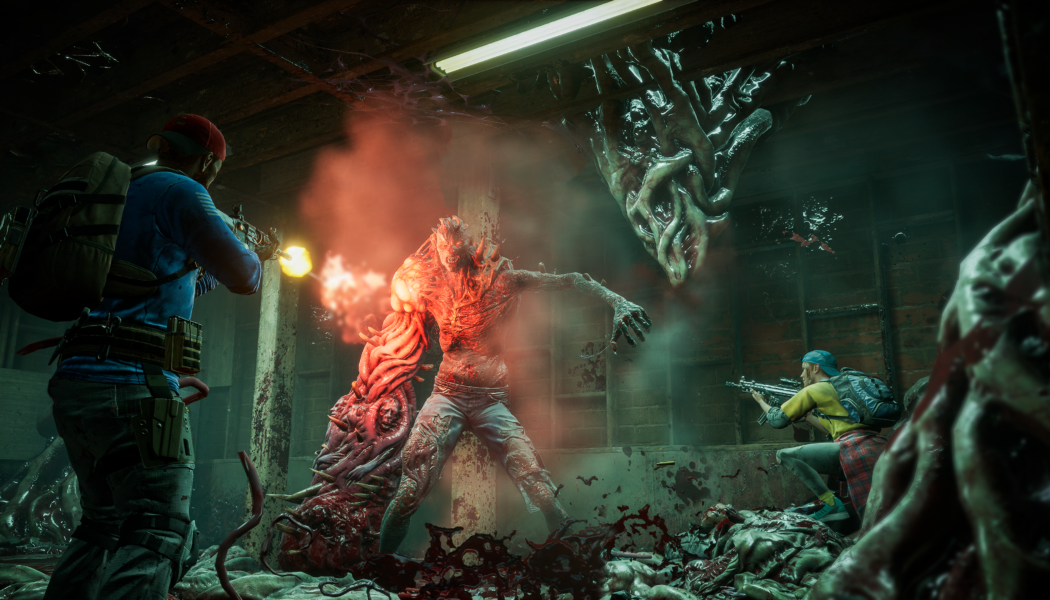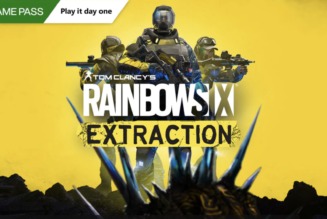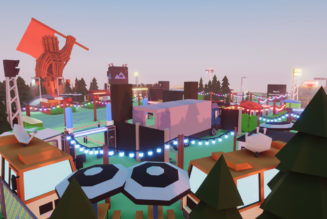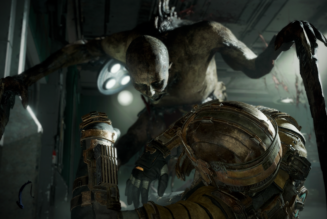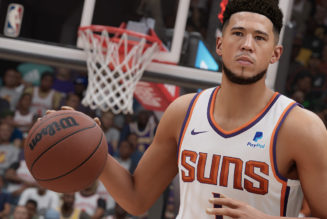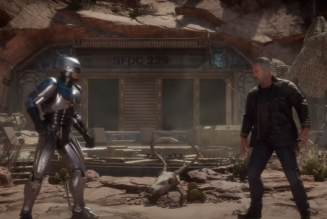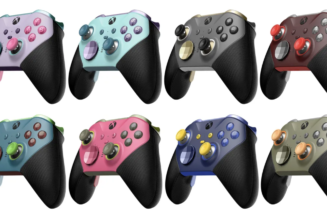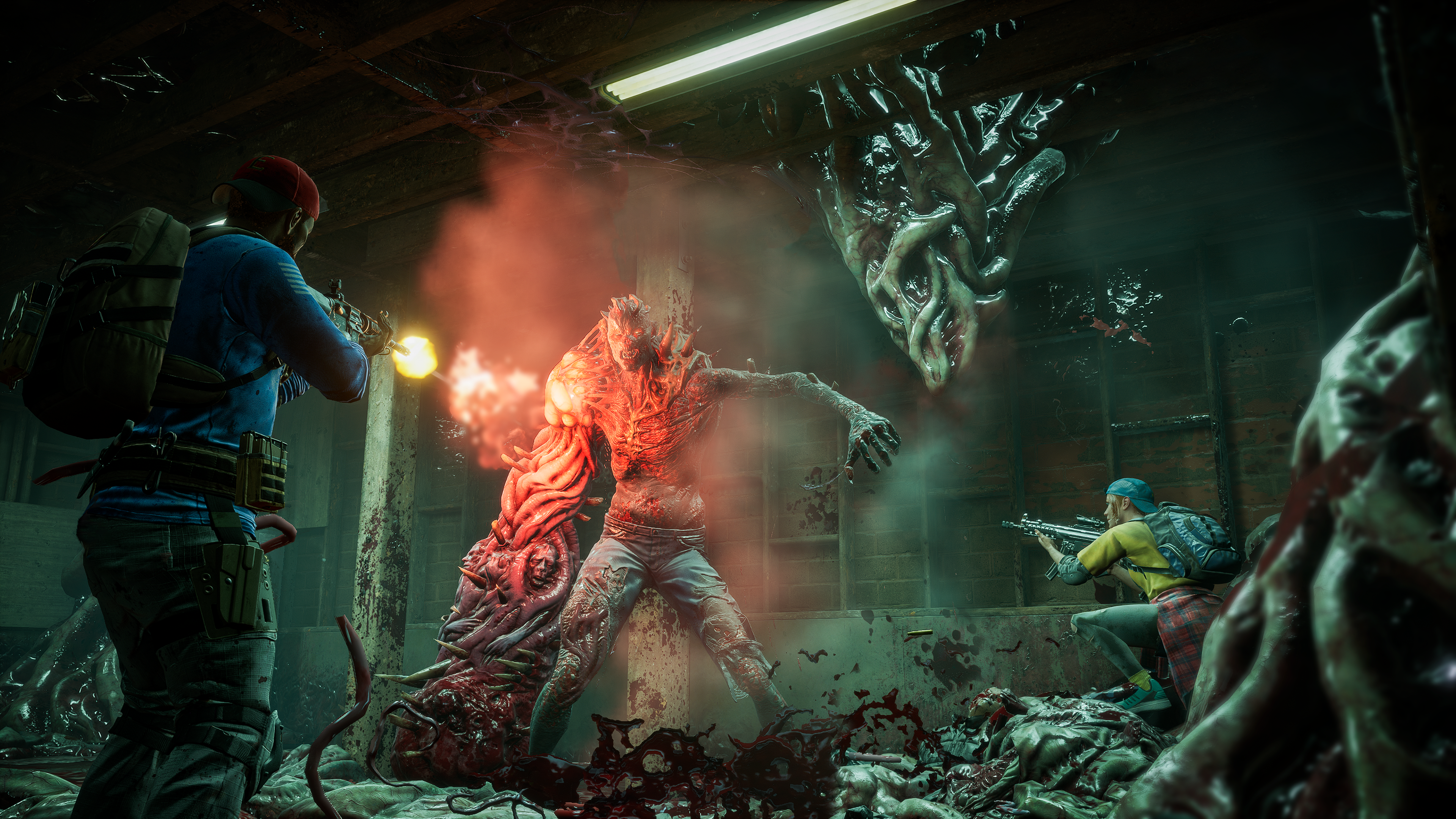
In the world of co-op zombie-killing games, Left 4 Dead pretty much set the standard in 2008 and never looked back. To this day, it’s still considered the peak of the genre by many, which is why a ton of folks are excited about the team at Turtle Rock Studios returning to the genre for the first time in a dozen years with Back 4 Blood.
If you’ve somehow missed the thousands of commercials and advertisements across a multitude of platforms, Back 4 Blood is an intense, action-packed first-person shooter where you and three teammates face off against a seemingly endless horde of the “Ridden” — conventionally known as zombies and other undead monstrosities. It’s a post-apocalyptic bloodbath that requires teamwork, nerves of steel, and a whole lot of bullets.
To provide the right type of atmosphere for such violence, Turtle Rock busted out a wide variety of DIY instruments and unconventional methods for the score. It certainly stands out compared to action/horror games that rely on more traditional orchestral soundtracks, giving a unique auditory experience fitting for the world it portrays.
SPIN spoke with Back 4 Blood’s Lead Audio Designer Silvano Matthews, Audio Programmer Alex Pappas, Composer and Game Audio Specialist Martin Stig Andersen, and Composer Nathan Whitehead to find out exactly what went into making the new game’s score.
[embedded content]
SPIN: What do you think makes the Back 4 Blood soundtrack unique?
Martin Stig Andersen: To me, it’s the contrasting of the gritty and bleak with hope and determination — the combination of raw energy and emotional depth. While supporting the mood and intensity of the game, the music also provides a whole lot of audio cues that can help the player survive. The high level of interactivity within a co-op experience undoubtedly also makes the Back 4 Blood score unique.
Silvano Matthews: We wanted the whole thing to sound very DIY. As if all the elements were just makeshift instruments you could find lying around the streets in Back 4 Blood. Really trying to adhere to that limitation allowed for a very honest sonic palette that we were able to draw from. It really gave the soundtrack this unique, raw attitude we think the game was asking for.
Nathan Whitehead: In one of our early meetings, Silvano brought up a shovel guitar which — as it sounds — is an actual shovel fitted with guitar strings and a pickup. I immediately bought one of these, and this led to tons of guitar sound experimentation. The shovel guitar produces kind of a raw, metallic sound and it’s just the sort of thing you can imagine someone building in the world of Back 4 Blood. This inspired me to try alternate tunings and techniques with all of my guitars. I tuned a resonator guitar down to low C and played it with a bow. I would just stay in and record and capture all of these long takes of sounds and little riffs. You can hear this sort of bark/scream sound right at the top of the main theme — that’s from the bowed resonator, and this sound became a key ingredient throughout the score. I think the resonator was a nice color for Back 4 Blood because it can sound very organic as an acoustic instrument, but can also produce these fantastic, aggressive, metallic sounds when you really dig in. I went through a lot of bows doing this.
Considering that people probably already think they know what to expect if they played Left 4 Dead, how much emphasis in Back 4 Blood went into creating a new environment and atmosphere musically?
Andersen: The overall atmosphere in Back 4 Blood is very elaborate and immersive compared to Left 4 Dead and calls for a more environmental vibe — almost as if the music would somehow stem from the game’s world. The studio’s DIY idea for the score also helped us steer away from Left 4 Dead.
Matthews: Back 4 Blood is its own world, and we definitely wanted the music to reflect that. There were some functional elements we took from Left 4 Dead to help meet the needs of the gameplay — like scenario music and boss music — but the soundscape itself stands entirely on its own. One thing we really had to consider was the fact that all of the bosses could be active at once. We chose to go with this “band” idea where the Hag was the singer, Breaker was the bass, and Ogre was the drums. This gives them their own frequency space when they’re all present at a given time. There’s different design cases like that we had to take a fresh approach on. I think the theme really encapsulates what the sound of Back 4 Blood is and how there’s this raw dance of heroism and darkness.
Since you mentioned DIY instruments like the shovel guitar earlier, is there any one of them that stands out to you?
Andersen: With Silvano’s suggestion of exploring hillbilly instruments, I acquired a huge zinc washtub. Before looking for other instruments, I disappeared into a rabbit hole with the tub. Apart from using it as washtub bass, it was also used for percussion sounds and strange metallic harmonies. Re-amping or “worldizing” sounds by playing materials into the tub via an audio transducer and then picking up the sound with microphones and contact mics. We put stuff on it that would rattle, played weird homebuilt instruments through it, filled it with water and recorded with a hydrophone, and more. The tub appears frequently in the score, and there’s even a suite composed exclusively using tub materials. The tub is in my garden now. Every time I move it around, it makes a sound I hear in Back 4 Blood.
How is it different to create for a game like this where people may be replaying it for round after round as opposed to something more narrative-driven where people will finish it and then likely put it away?
Andersen: There needs to be enough variation in the music to avoid it becoming annoying to the player, and it has to respond to the game in meaningful ways. It needs to be an active companion that helps the player engage in and navigate the game’s world. During rounds, the music also needed to be very dynamic. Unlike in most narrative-driven games where there’s a clear line between exploration and combat which music can respond to, you’re sort of always in combat in Back 4 Blood, and the intensity, the number and combinations of enemies are changing moment by moment. Everything is in flux and the music needs to be able to adapt continuously. For the rounds, we primarily opted for a modular approach to composition in which small fragments are layered and stitched together on the fly by the game based on intensity, player and enemy actions, and other factors. Such a nonlinear approach obviously limits the existence of linear musical elements such as melody, chord progression and metric, so the emphasis is on raw energy, texture and atmosphere. In contrast, we occasionally have bespoke musical set pieces to ramp up things and music identities for each boss type.
Alex Pappas: As Martin mentioned, the players are almost always in combat in some form, though its intensity is ever-changing. Each player is assigned a “personal threat” value which is roughly representative of how risky their character’s current positioning is. It’s driven by a variety of parameters, including the number and type of nearby Ridden. This allows the game to generate a musical experience that responds to a player’s preferred play style and matches the tension of the situation they currently find themselves in. It can crank up the intensity for a player who gets caught up in the fray, produce a more controlled musical experience for their teammate who is shooting into the horde from a safer distance, and can accommodate any situation in between as the tides can turn for or against you at the drop of a hat.
Whitehead: I think a big difference is the level of music interactivity that Back 4 Blood requires. We really wanted the score to be able to tell the story of each play through in a way that was unique to the player’s experience. Martin did amazing things on this front. We also created different versions of the safe room and pre- and post-round music that reflect how the players are faring. If you suffer a nasty beat down, you’ll hear a change at the end of the round and when you’re back in the safe room. The mood is less heroic now, with more anxiety and dissonance. Some of these shifts are subtle, but hopefully they help create an immersive experience that is varied and engaging.
